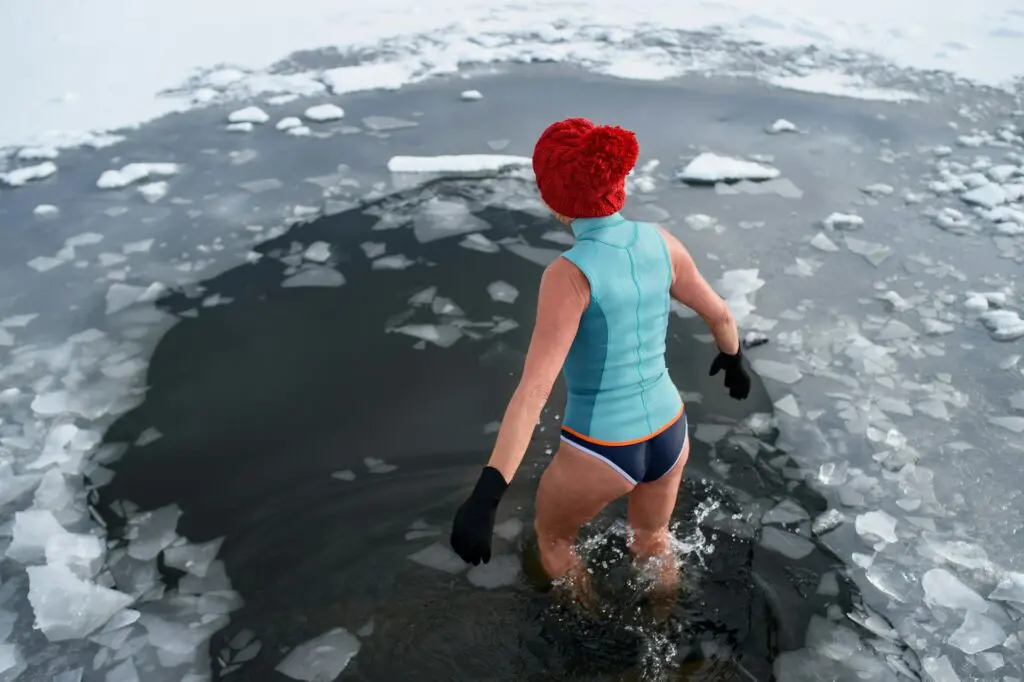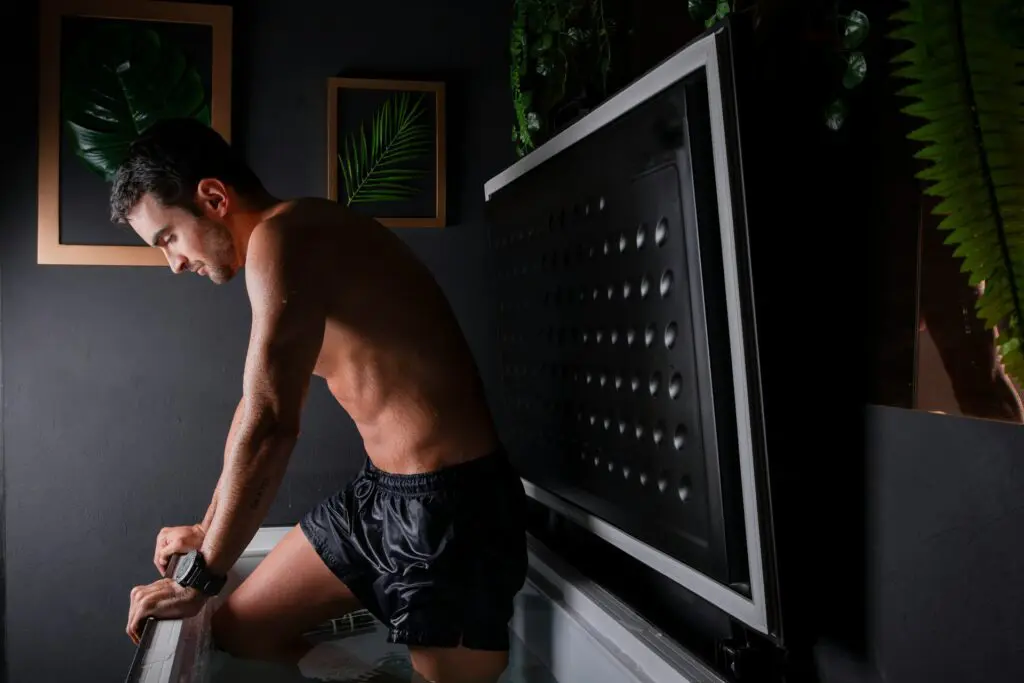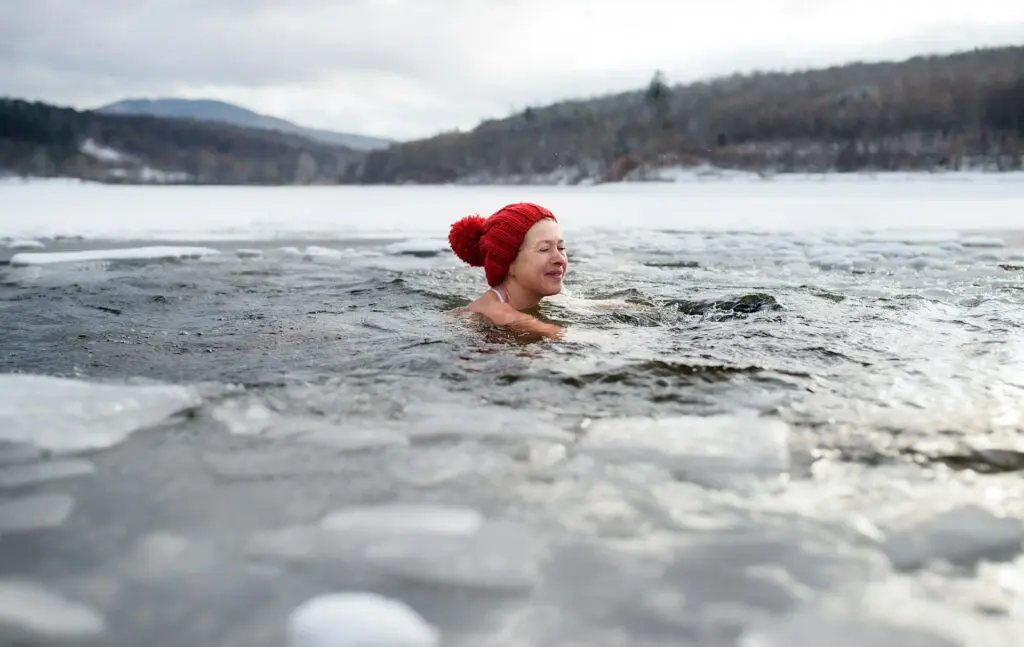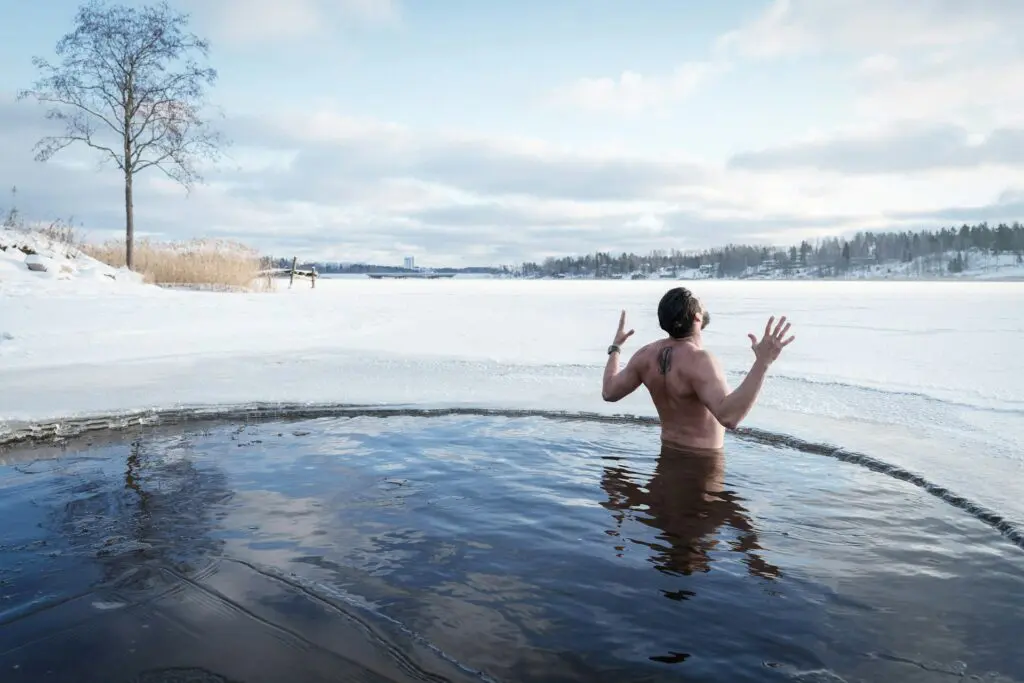Important Note: This article is for informational purposes only and is not medical advice. Always talk to your doctor before starting any cold plunge program, especially if you have health conditions or take medications. Your doctor can help you decide if cold plunging is safe for you.
Picture this: It’s 6 AM, and Olympian Michael Phelps slips into a 50°F pool. Why would the world’s most-decorated Olympic athlete choose to start his day with such an intense practice? The answer lies in cold plunging, a wellness practice that dates back thousands of years and is now backed by modern science. More people than ever are discovering cold plunge benefits. This guide will explore ten science-backed advantages of cold-water immersion and show you how to get started safely.

What Is a Cold Plunge? | 10 Cold Plunge Benefits | Getting Started with Cold Plunge Therapy | FAQs | Next Steps
What Is a Cold Plunge?
A cold plunge involves immersing your body in cold water that is typically between 50-59°F (10-15°C). While professional athletes might stay in for up to 15 minutes, beginners usually start with just 30 seconds to 2 minutes.
You can experience cold plunge benefits through various methods:
- Purpose-built cold plunge tanks
- Ice baths in your regular bathtub
- Cold showers
- Natural bodies of water like lakes or oceans
10 Cold Plunge Benefits
1. Faster Recovery and Less Muscle Soreness
Cold-water immersion reduces delayed onset muscle soreness (DOMS) by constricting blood vessels and decreasing metabolic activity, which reduces swelling and tissue breakdown. Studies show that people who use cold-water therapy experience less muscle soreness after intense training.
2. Better Mental Health and Less Stress
Cold water exposure triggers the release of endorphins and norepinephrine, your body’s natural mood elevators. Research published by Stanford found that regular cold water immersion can reduce symptoms of anxiety and depression by promoting adaptation to stress.
3. Stronger Immune System
Regular cold exposure increases levels of white blood cells and antioxidants. A study in the Netherlands showed that people who practiced cold water immersion had a 29% reduction in sick days compared to those who didn’t.
4. More Brown Fat (The Good Kind)
Cold exposure activates brown adipose tissue (BAT), or “brown fat,” which burns calories to maintain body temperature. Unlike white fat that stores calories, brown fat helps regulate metabolism and may support weight management goals.
5. Improved Sleep
Cold plunges can enhance sleep quality by optimizing your circadian rhythm. The rapid temperature change triggers the production of melatonin, your sleep hormone. For best results, try cold exposure at least 3 hours before bedtime. If quality sleep is a struggle for you, read more tips on improving your sleep.

6. Sharper Mind and Better Focus
Cold water immersion increases blood flow to the brain and triggers the release of norepinephrine, which can improve focus and cognitive performance. Users often report enhanced mental clarity lasting several hours after their plunge.
7. Less Body Inflammation
Cold exposure reduces the production of inflammatory cytokines while increasing anti-inflammatory compounds. This can help manage inflammation and support faster recovery from injuries.
8. Healthier Heart
Regular cold exposure may strengthen your heart by improving circulation and reducing blood pressure. The cold causes blood vessels to constrict and then dilate, creating a natural pump effect that benefits cardiovascular health.
9. More Natural Energy
Cold plunges stimulate the production of norepinephrine and cortisol, providing a natural energy boost without caffeine. Many practitioners report feeling energized for hours after their cold exposure.
10. Better Stress Handling
Regular cold exposure builds mental resilience by teaching your body to adapt to stress. This practice, known as hormesis, can improve your ability to handle both physical and mental challenges.

Getting Started Safely with Cold Plunge Therapy
Professional Options
Investing in a dedicated cold plunge tank provides a convenient and controlled environment for your cold therapy sessions. Tanks are costly but might be worth it if you are a regular practitioner of cold plunge therapy.
Recoverex Cold Plunge Tub
The Recoverex Cold Plunge Tub is easy to move around in and has a cutting-edge design. It cools down quickly and lets you control the temperature through an app on your phone. Built tough like military equipment, it can be used inside or outside. It has a self-cleaning system and a strong chiller to keep the water cold and clean, making it great for regular cold water therapy.
Chilly Goat Tubs
Chilly Goat Tubs’ cold plunge tub, endorsed by Michael Phelps, is built with top-notch athletic and spa know-how. It has cool features like a wide temperature range, a strong chiller, and an advanced UV water purification system, making it safe and clean. It also has SoftTread™ nonslip flooring, built-in seats, and LED lighting. This tough tub works in any weather, stays cold all the time, and gives you a luxurious and healing cold water soak.
Icebound Essentials (Budget-Friendly Choice)
The Icebound Essentials Immersion Cold Plunge Tub stands out because it’s big enough to fit tall people and can be used for effective cold therapy at home. It’s made from strong, lightweight material like what is used for inflatable paddleboards, making it easy to move and set up anywhere. This insulated tub keeps the cold water just right for longer. It comes with everything you need to get started, including a pump and a carrying bag.
Budget-Friendly Alternatives
Consider testing the waters first to see if you are getting the cold plunge benefits you need before buying a more permanent solution:
Regular bathtub with ice ($3-5 per session)
Using your existing bathtub filled with cold water and ice is a cost-effective way to start experiencing cold plunge benefits. Add 2–3 bags of ice to lower the water temperature to the optimal range for therapeutic benefits.
Cold showers (free)
Switching to cold showers is an easy way to incorporate cold therapy into your routine without any additional costs. Keep in mind you likely won’t get the icy cold temps and therapeutic benefits touted by some experts.
Natural water sources (free)
Utilizing lakes, rivers, or the ocean provides a natural and invigorating cold plunge experience at no cost. We admit, this is more of a tease if you don’t live near easily accessible natural water sources, but they are an option to keep in mind.
Safety Guidelines
- Start with 30-second exposures: Begin with short durations to allow your body to acclimate to the cold, gradually increasing the time as you become more comfortable.
- Breathe slowly and steadily: Focusing on controlled breathing helps manage the shock of the cold and maintains calmness during the plunge.
- Do not plunge alone: Have someone nearby to ensure safety in case of unexpected reactions like dizziness or excessive shivering.
- Exit if you feel numbness or extreme discomfort: Listen to your body and end the session if you experience any signs of numbness or severe discomfort.
- Warm up naturally afterward: Gradually warm your body by drying off and putting on warm clothing, avoiding hot showers immediately after the plunge to let your body adjust.

Frequently Asked Questions
How cold should the water be?
For optimal cold plunge benefits, maintain water temperature between 50-59°F (10-15°C). Colder temperatures don’t necessarily provide additional benefits and may increase risk. Beginners should start at the higher end of this range and gradually work down to cooler temperatures as their body adapts.
How often should I do cold plunge therapy?
Start with 2-3 sessions per week, allowing 48 hours between sessions for recovery. As your body adapts, you can increase frequency to 4-5 times per week. Listen to your body and adjust frequency based on your recovery and energy levels. Athletes may benefit from daily sessions during intense training periods.
What’s the best time of day for a cold plunge?
Morning cold plunges (6-10 AM) can boost energy and alertness for the day. Avoid cold exposure 3-4 hours before bedtime as it may interfere with sleep. Post-workout plunges should be done within 30 minutes of exercise for optimal recovery benefits.
How long does it take to see cold plunge benefits?
The time it takes to see benefits from cold plunging can vary depending on individual factors like frequency of use, duration of each plunge, and personal health conditions. Some people might notice immediate effects such as increased alertness, improved mood, or reduced muscle soreness right after their plunge. For longer-term benefits like enhanced immune response, improved circulation, or better stress management, it might take a few weeks of consistent practice to notice significant changes.
Can I eat before a cold plunge?
Wait 2-3 hours after large meals before cold exposure. Light snacks are okay 1 hour before. Stay hydrated but avoid caffeine immediately before plunging as it can affect your body’s natural response to cold.

Next Steps: Start Your Cold Plunge Journey
Cold water therapy can be a powerful addition to your wellness routine, offering significant benefits for both body and mind. Start with simple steps, like ending your shower with 30 seconds of cold water, and gradually build up to regular cold plunges. Keep consistent to see improvements in recovery, mental clarity, and overall health.
Ready to dive deeper? Take the first step today and share your experiences in the comments! Don’t forget to subscribe to Bananomad’s Gorilla Gazette for more tips to help your wellness journey.
More from Bananomad
- Want to reset your body naturally? Learn the benefits of fasting for 24 hours, including weight loss, cellular repair, and improved insulin sensitivity.
- Discover how to choose the best fermenting kits for beginners and our top recommendations. Learn home fermentation tips to help your gut health.
- From puzzles to play, the best interactive dog toys are a click away. Discover our favorites for dogs of all sizes and ages.


Leave a Reply